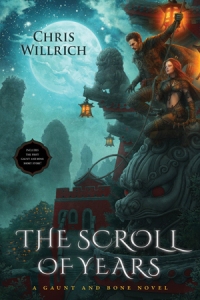The book was edited by Hank Stine and illustrated by Stephen Fabian, and features an introduction by L. Sprague de Camp. It was first published as a trade paperback by The Donning Company in 1981. It was reprinted by Starmount House in 1988, Borgo Press in 1989 and Wildside Press in 1999.
The collection consists of a cycle of thirteen stories, nine of them originally published from 1976-1979 in various fantasy and science fiction magazines and anthologies, with the remainder original to the collection.
 It gets an A+ for the dark, vivid atmosphere that envelopes each tale — perfect reading material for October — and a C- for characterization. You never truly get to know Julian the apostate knight (or any of the secondary characters, for that matter), but the lands through which Julian travels are fully realized…and spectacularly creepy. This isn’t that surprising given that the book is not a novel but rather a compilation of a body of serial fiction, a medium that can make characterization more difficult.
It gets an A+ for the dark, vivid atmosphere that envelopes each tale — perfect reading material for October — and a C- for characterization. You never truly get to know Julian the apostate knight (or any of the secondary characters, for that matter), but the lands through which Julian travels are fully realized…and spectacularly creepy. This isn’t that surprising given that the book is not a novel but rather a compilation of a body of serial fiction, a medium that can make characterization more difficult.
I’ve seen comparisons of Julian to other ill-fated protagonists like Karl Edward Wagner’s Kane and Michael Moorcock’s Elric, but I see a major difference. In my somewhat limited exposure to Kane and Elric, I never came away with the sense that they possessed any conscience, so I could never really root for them. In fact, I just didn’t like them. Elric especially came across as a narcissistic, lugubrious prick.



 Posted by Nik Hawkins
Posted by Nik Hawkins 


